Review by Pete Vack
Lest one think that this is an old discovery, you are right, it is. Alfa SZ chassis 00170 was purchased by Italian car collector Corrado Lopresto in 2014, and this unrestored treasure was on the show circuit by 2015, where it was photographed by Jonathan Sharp at the Wilton Concours in England.
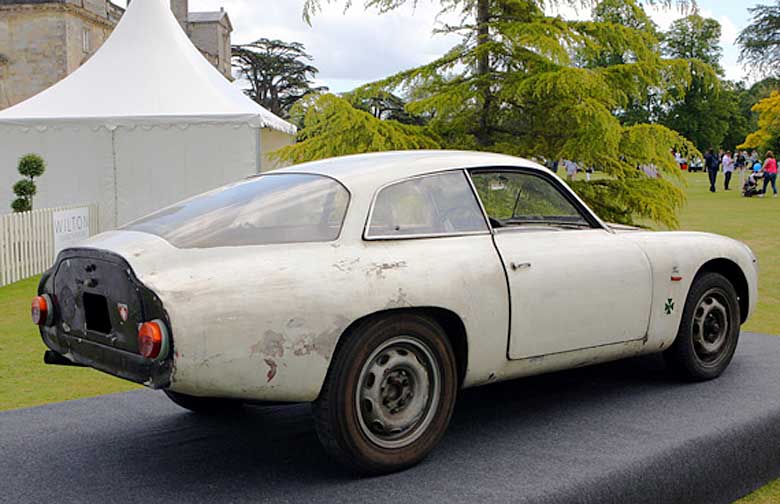
Wilton Concours in Great Britain, 2015 as photographed by Jonathan Sharp. At this point the car was still in the original ‘as found’ condition.
In the ensuing years, Lopresto’s find, preserved and conserved, was widely appreciated by the classic car community. Then, this past summer, Dalton Watson published The Art of Conservation, Alfa Romeo SZ Coda Tronca.
The book, written with Corrado Lopresto, Gautam Sen and Paolo Di Taranto, published in both English and Italian, helps define the art of conservation and preservation while asking the reader to give some serious thought to the future of restoration, awards, presentations and the use of a work of art. It also presents the case for the unusual, and often controversial, two-sided effort to demonstrate both an ‘as is’ condition and one of conservation. And finally, it tells the story of the history of 00170, its significance, the amazing discovery in a barn in Pennsylvania, and the process of conservation.
Which side is which
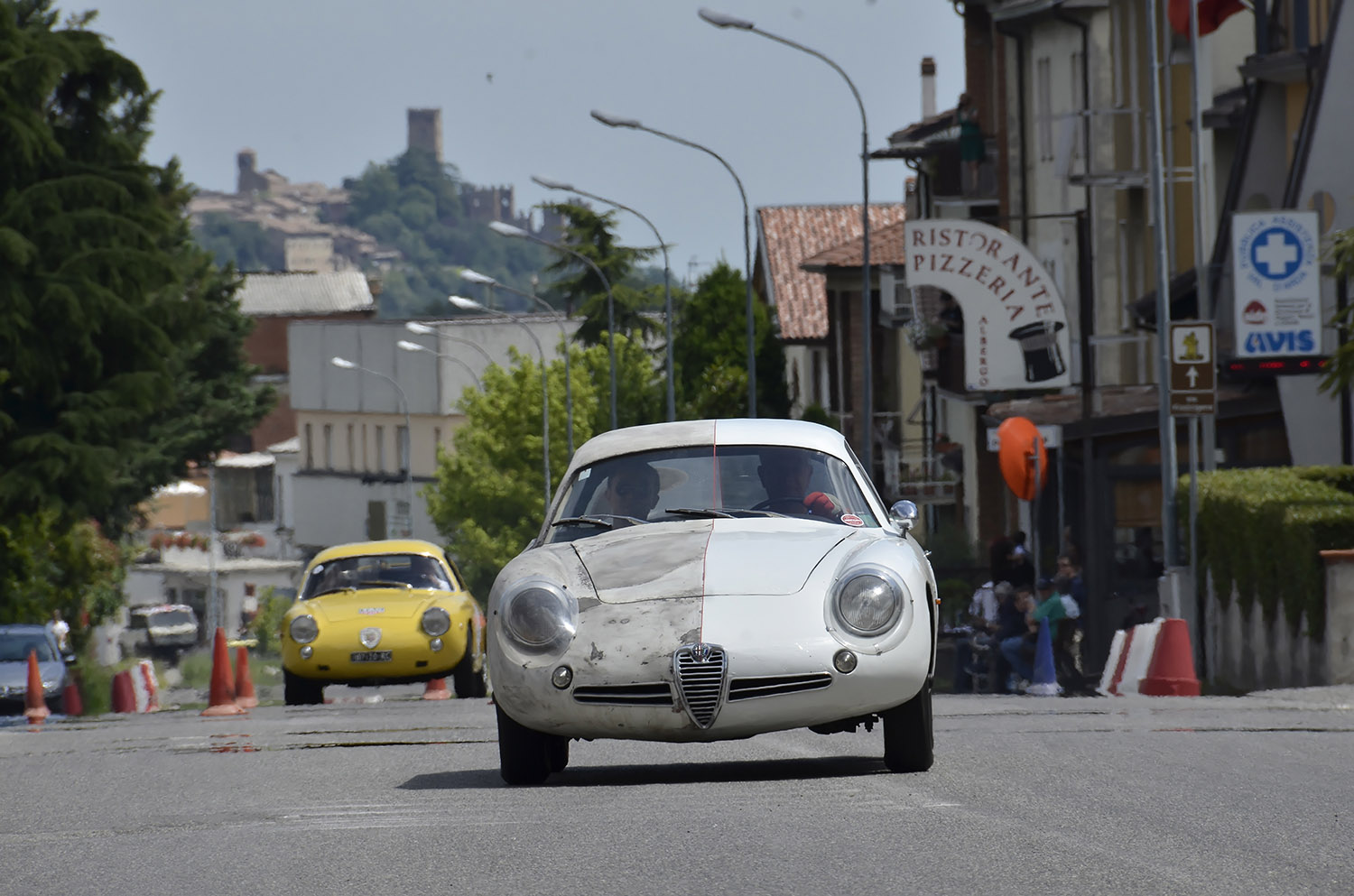
Now split with the ‘as is’ on one side and a conservation effort on the other, the SZ gets a lot of attention. Photo from The Art of Conservation, Alfa Romeo SZ Coda Tronca
We’ll let Dalton Watson Publisher Glyn Morris define the two-sided nature of Corrado Lopresto’s Alfa Coda Tronca:
“The pictures of this ‘half and half’ car tell it all: half the car is cleaned but not restored, while the other is in ‘as found’ condition.”
This is further amplified by FIVA (The Fédération International des Véhicules Anciens, the worldwide federative association of historic automobile clubs) President Patrick Rollet:
“I’d say that the ‘uncleaned’ half’ of the car—the one just protected by a thin layer of transparent matt lacquer to retain the original dust – is preservation (also called ‘preventative conservation’), while the other half is conservation as the work carried on is aimed at stopping or delaying existing deterioration and damage.”
Despite ambiguities and questions, the two-sided Zagato is an honest attempt by Lopresto to conserve and preserve rather than restore. In doing so the project brings a great deal of attention to the subject of art conservation as applied to automobile restoration. Always difficult to ignore because of its inherent beauty, 00170 is now impossible not to elicit comments from even the most blasé observer. Now, thanks to the courageous efforts of Lopresto, we – and more importantly, FIVA and concours committees and judges all over the world – are having this discussion.
Only original once
The new book is not to be considered a guide to the restoration or repair of the car. While there are plenty of photos on that subject, they are not specific and offer no explanations. It is about the Art of Conservation, as the title implies. This, at times, makes it frustrating for some of restoration detail wonks, the book addresses the subject at hand. The authors let the photos, taken during various stages of conservation, tell the story. In particular, how the original paint and interior were saved ‘as is’ is fascinating and very costly, as it is less time consuming to simply repaint and replace rather than carefully preserving.
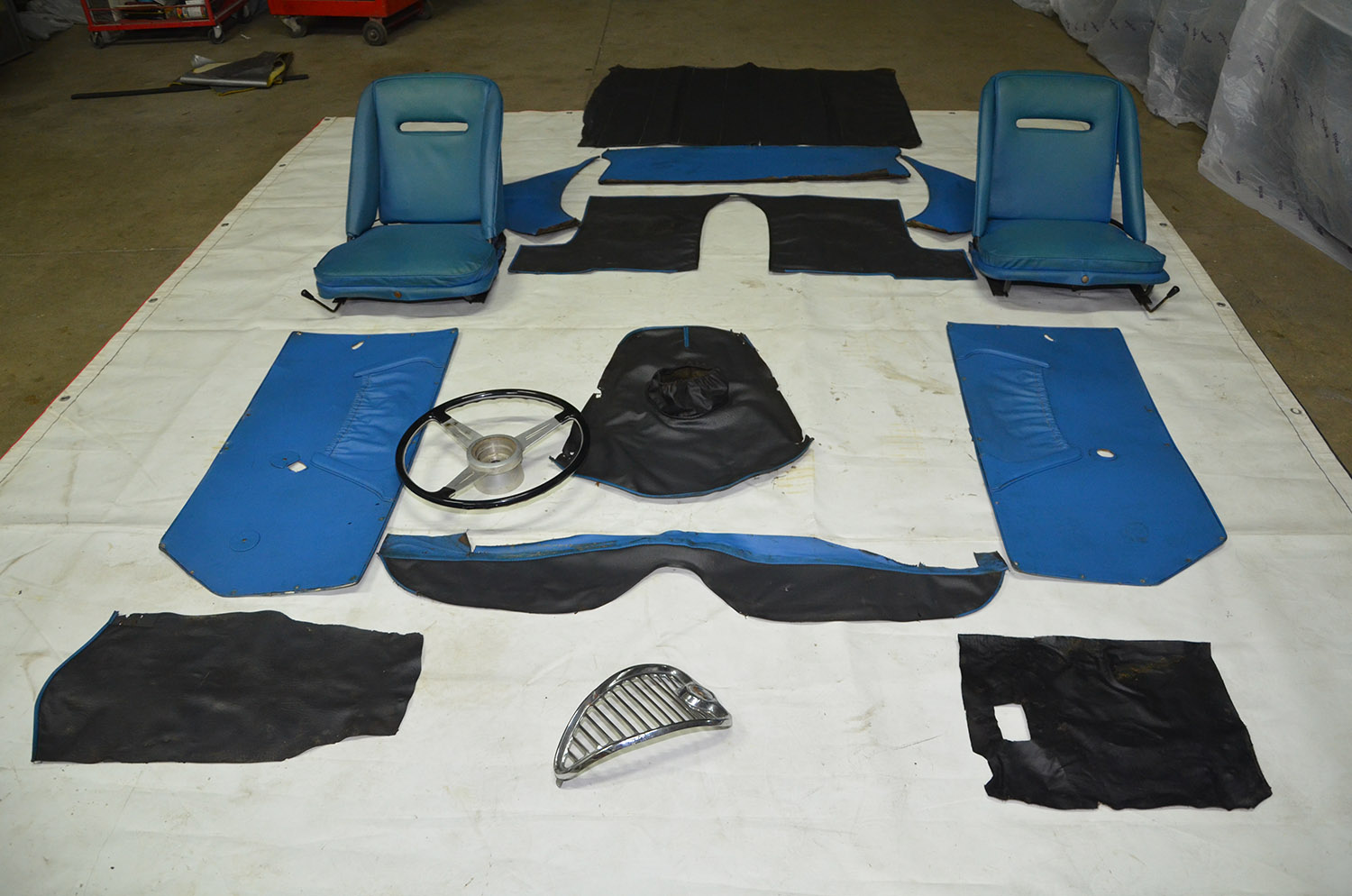
The original interior ready to be placed back in the car. Each section was carefully cleaned with a minimum of repair. Photo from The Art of Conservation, Alfa Romeo SZ Coda Tronca
In addition to the chapters on the preservation techniques applied to the Alfa, further chapters provide a short history of the development of the Giulietta by well-known Gautam Sen and Italian Zagato expert Paolo Di Taranto discusses Zagato’s role in creating the series of lightweight Alfas that culminated in the TZ1 and 2, and conducts an interview with its most famous designer, Ercole Spada.
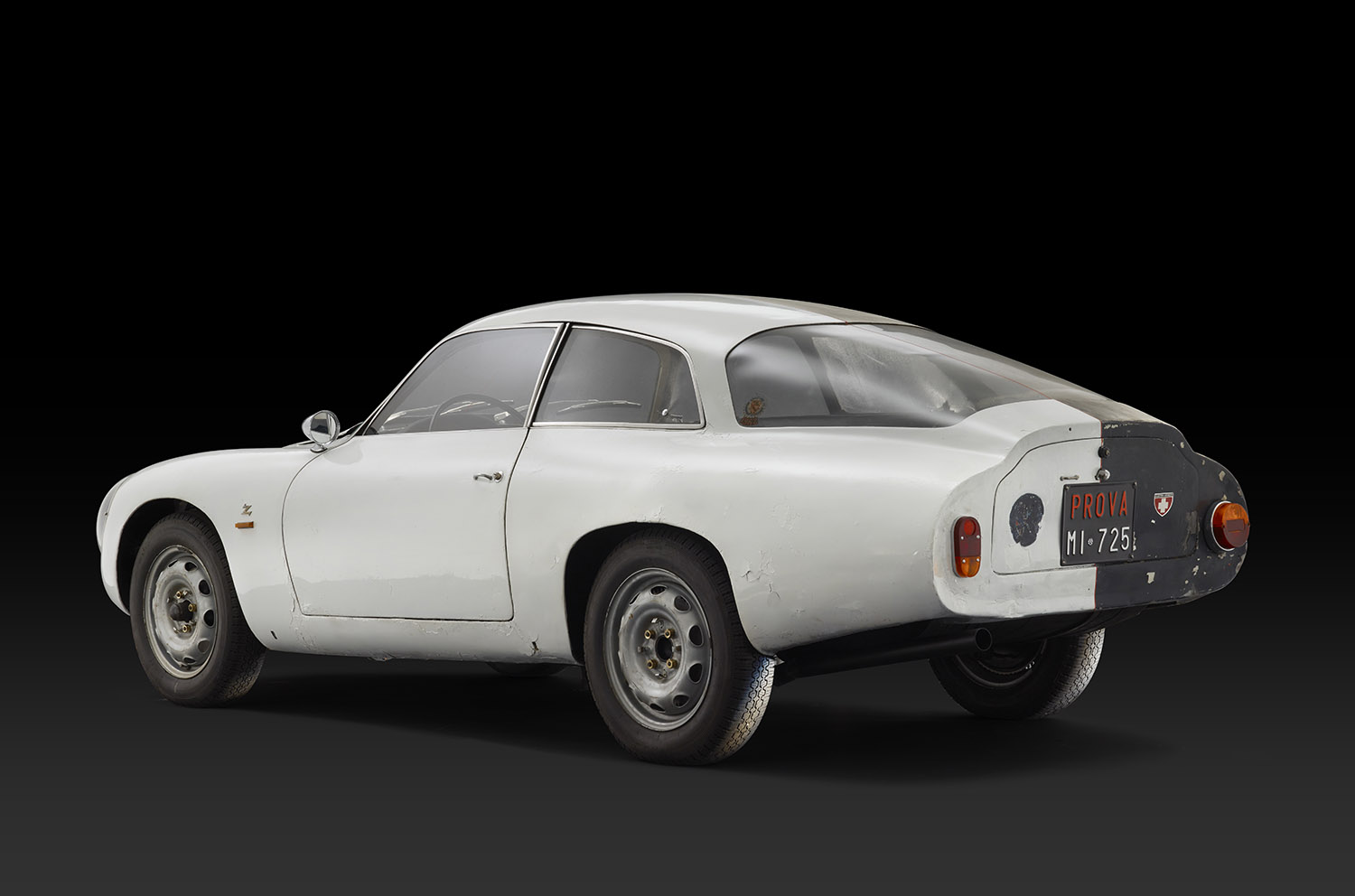
The left side of the car was not ‘restored’ but measures taken to conserve the body from further deterioration. The suspension and engine were removed, cleaned, and re installed. Photo from The Art of Conservation, Alfa Romeo SZ Coda Tronca
The importance of a clipped tail
Along with Elio Zagato, Spada was responsible for the aerodynamic changes to the Coda Tonda that increased the speed and revs by using a Kamm tail attachment to the car. Elio Zagato was immediately impressed and a prototype Coda Tronca* was constructed by June, 1961. On June 29, Elio Zagato drove the new car to victory at Monza. The success of the Coda Tronca (according to Spada only 44 were built) was immediate but short-lived, as the new 1300 Simca Abarth was about to leave both the Lotus Elites and the 1300 SZs in the dust. However, the new Kamm tail design became a trademark of Zagato and Spada, and added to the increasingly critical knowledge of all automotive aerodynamics. To call the Coda Tronca a milestone car is perfectly justified.
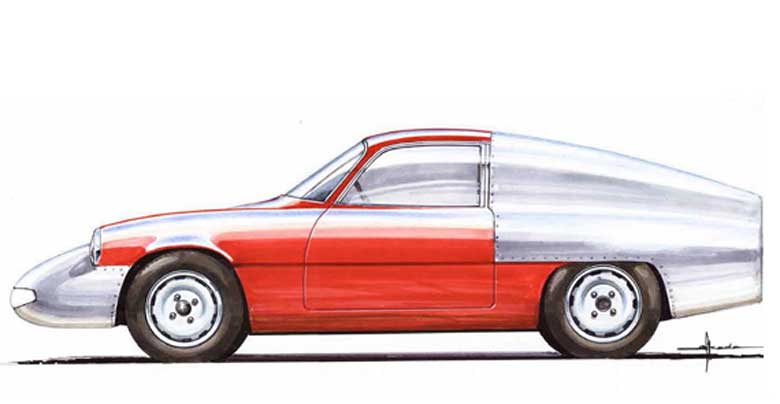
This drawing is by Ercole Spada and is from his biography, Spada, A long story about a short tail by Bart Lenaerts. He describes how the Coda Tronca was created by adding length both in the front and the rear of a short-tailed SZ. Our review of the book can be read here: https://velocetoday.com/book-review-spada-the-long-story-about-a-short-tail/
Ercole Spada remembers the experiments on the Milano-Bergamo motorway vividly, but provides no exact dates, or chassis numbers. He was only 23 and this was one of his first projects at Zagato. He states that after the prototype was final, “The next race at Monza, he grabs pole position, fastest lap and victory.”
(A more complete account of the Coda Tronca can be found here)
When found, As found
In 2014 Paolo Di Taranto got a call from American Michael Rowen, part of the Scuderia Sports/Zagato team. Michael needed help identifying an Alfa SZ he had found in Pennsylvania, with a chassis number of 00170. It was a clipped tail (Coda Tronca) version and they found little information on the car. Even in Marcello Minerbi’s classic work, Alfa Romeo Zagato, SZ and TZ, the listing on 00170 simply said ‘no news’.
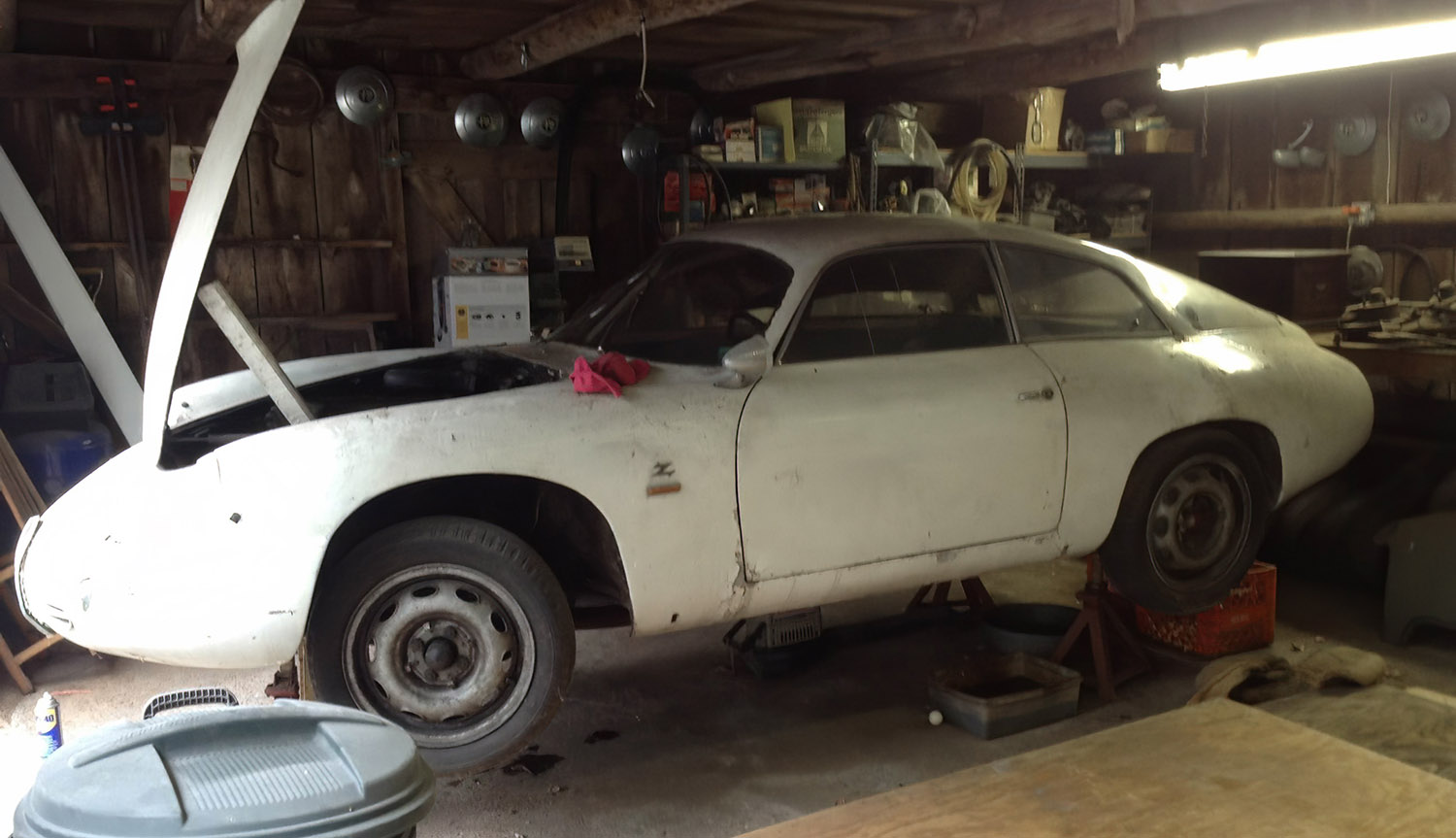
Initial photos of the car in the barn revealed a Coda Tronca in remarkably original condition. Photo from The Art of Conservation, Alfa Romeo SZ Coda Tronca
But Paolo had deep resources and started digging. It took some Italian sleuthing, but it was found that not only was the SZ an original Coda Tronca, but the prototype, a Coda Tonda modified to be the first Coda Tronca, had a good racing record in Italy before hiding in Pennsylvania for 46 years. Could it really be the Coda Tronca prototype?
Eventually, enough strong evidence supported that theory. Di Taranto researched the race history, the owners, and all sales and license information. When at last Michael Rowen, Di Taranto and Lopresto traveled to the old barn in Pennsylvania, they got it out in the daylight and underneath found evidence of the additional lengths of body support tubing, welded on exactly where they were told it would be. It was then determined that the Alfa Coda Tronca which Elio drove at Monza was chassis 00170.
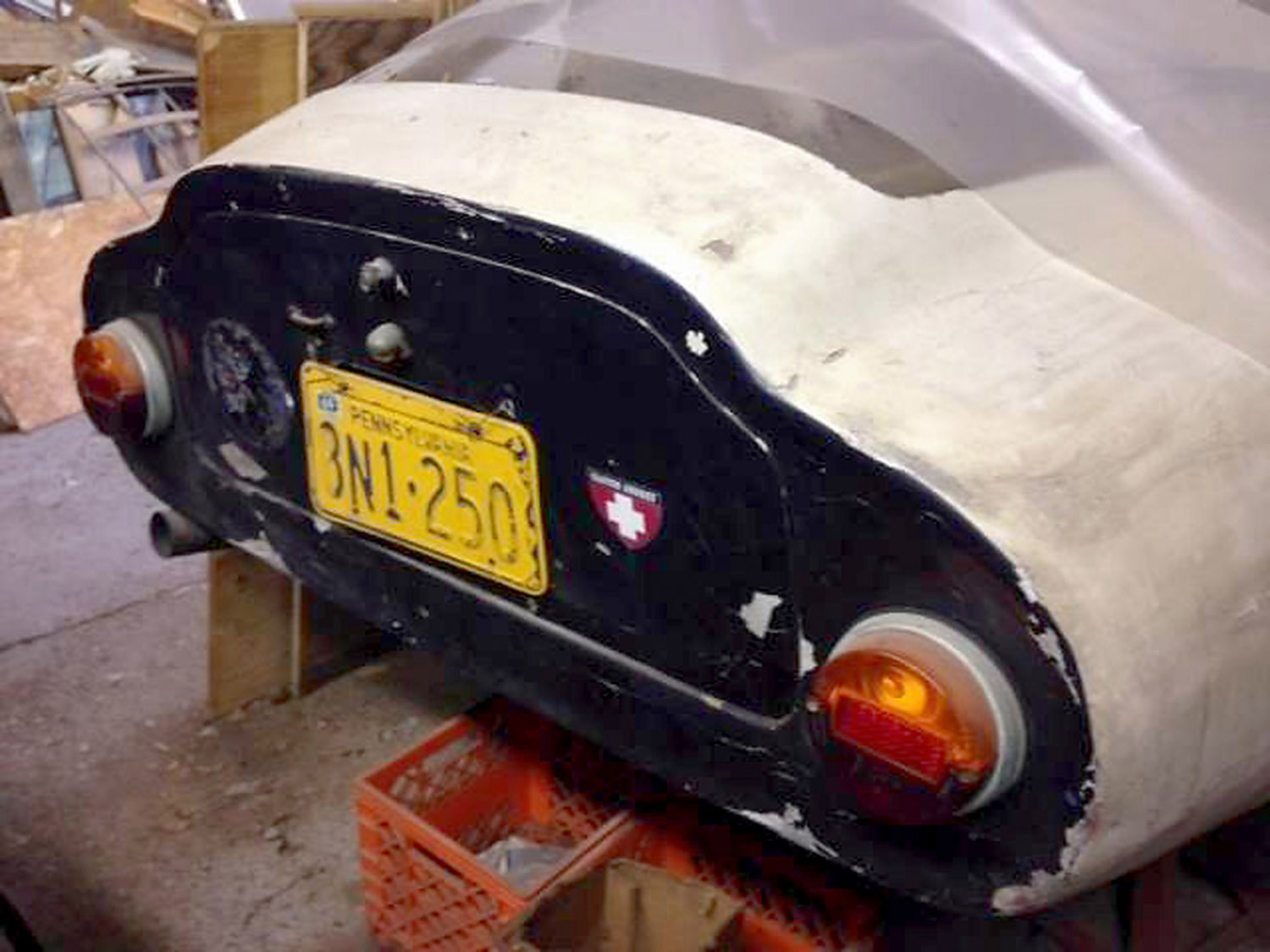
At some point the rear taillights were replaced by these round Fiat items, probably from an 850. Note the badge with the Swiss flag. Photo from The Art of Conservation, Alfa Romeo SZ Coda Tronca
The Alfa was purchased by Lopresto on the spot. It had been owned by a Dr. Armin B.A. Rhauda, who had brought the Alfa into the U.S. in 1964, probably via Alfa dealer Gus Andrey. Rhauda died in 2010, and by 2014 the family was ready to sell the car in the old garage in which it had been stored for a long, long, time.
(Jeff Allison wrote a three-part series on Gus Andrey for VeloceToday, which can be read here)
The book does not provide any details about Dr. Rhauda. But according to his obituary, he in lived in Robeson County, Pennsylvania, would most certainly would have known Alfa enthusiast and Pennsylvania resident Henry Wessels.
Still, he must have kept a low profile. Born in 1943 in Berlin, Germany, his family came to this country in 1954. According to his obituary, Rhauda was only 67 years old at the time of his death, and the cause of his death was not mentioned.
Page Size 290mm x 25mm
Hard cover with dust jacket
216 pages
263 illustrations
Written in English and Italian
978-1-956309-05-8
First published in 2024
Questions
The book elicited a string of questions about the process. We’d like to know what you would do, if you had found and bought the car. Use the comment section below.
*For those who unfortunately are not familiar with the anatomy of Zagato Alfa derrières, Coda Tronca is the clipped tail, later version of the 1300 SZ which replaced the earlier Coda Tonda, or round tail Zagato.
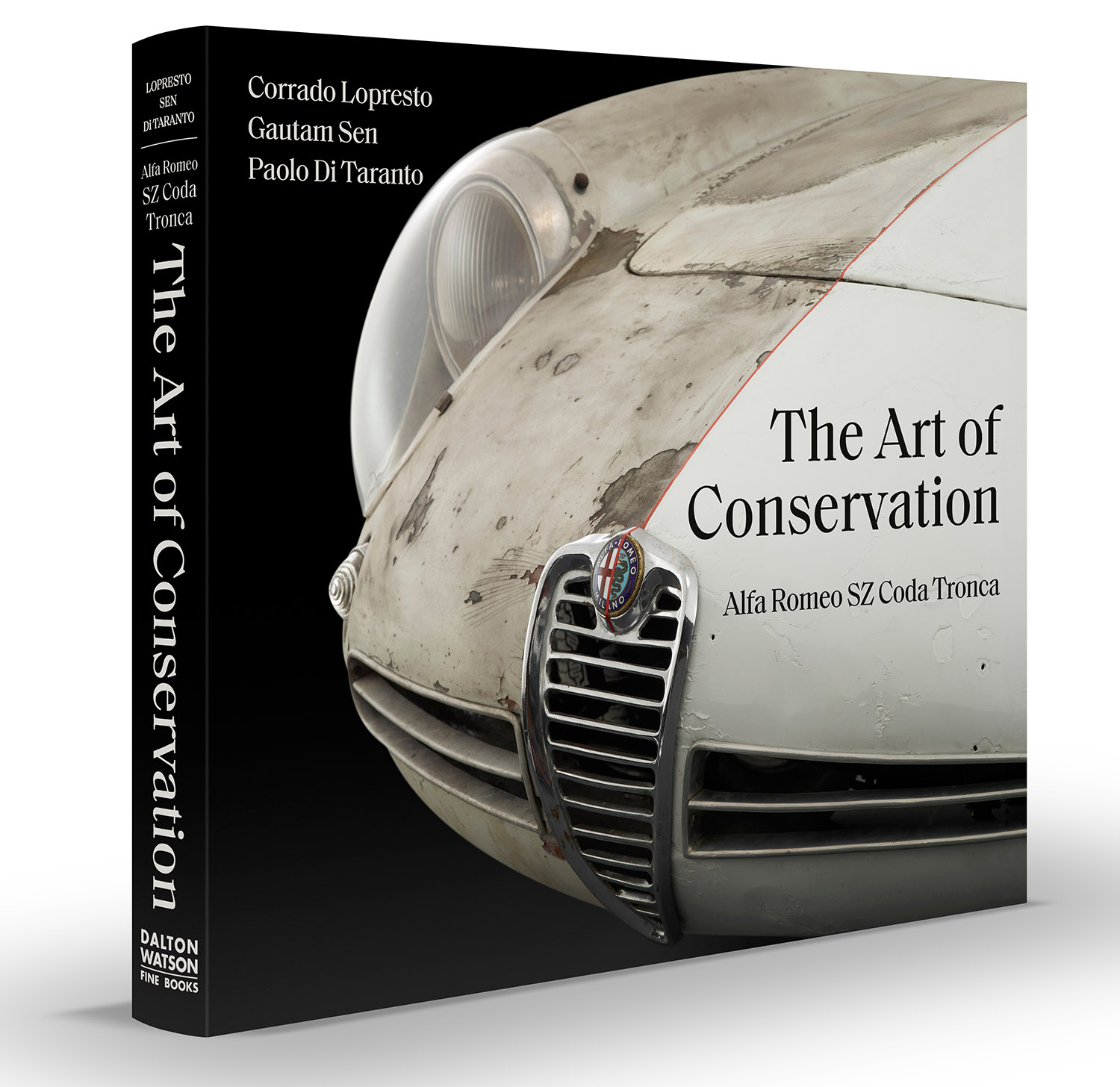
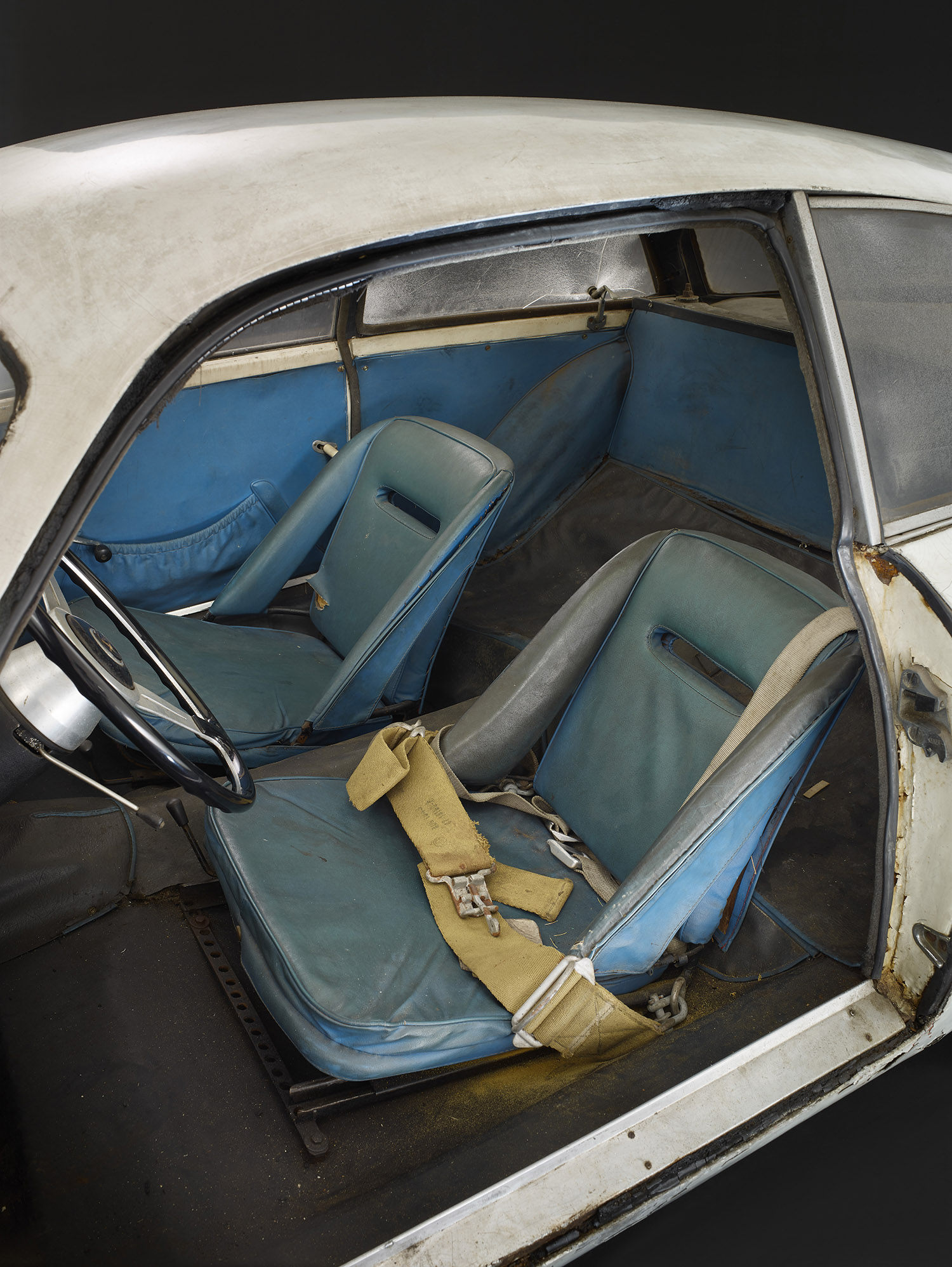

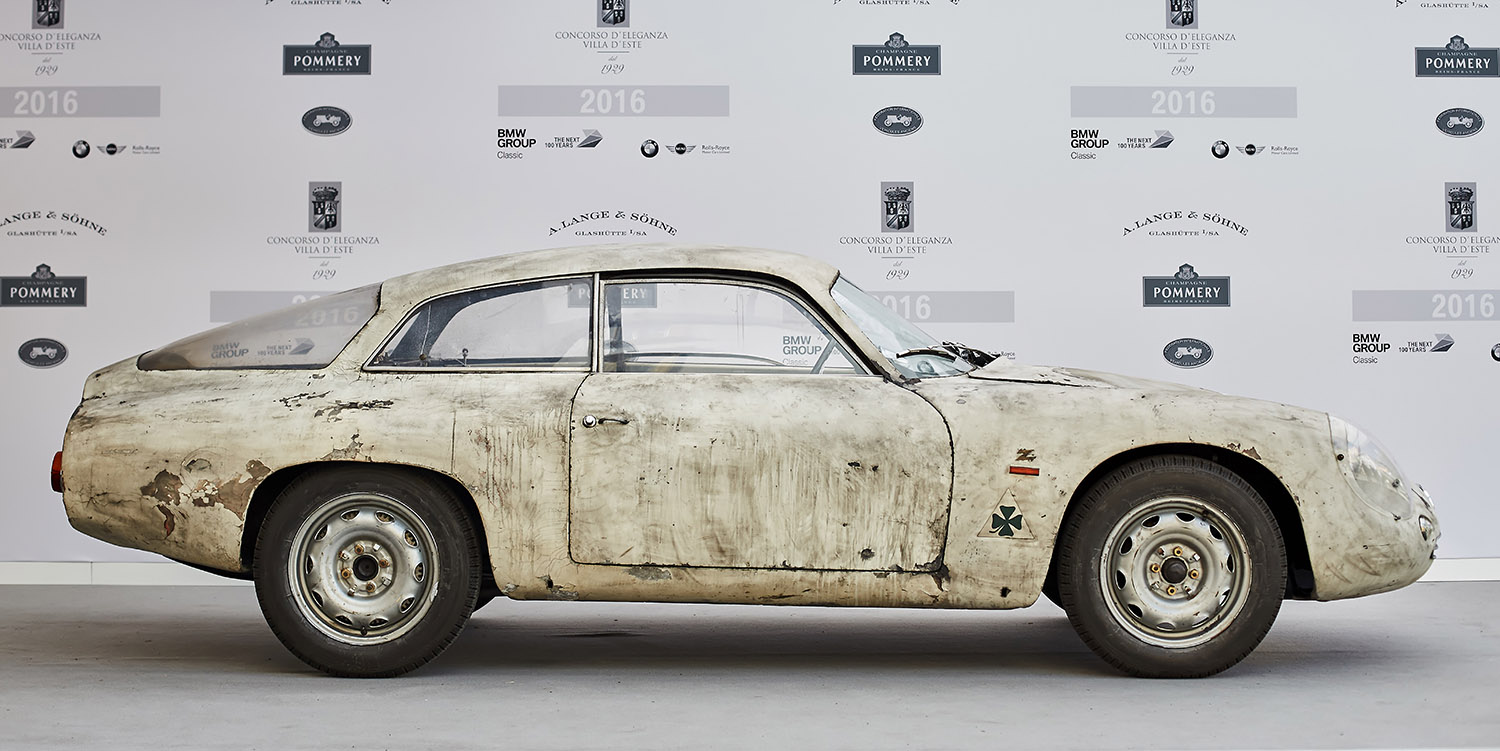
I encountered an “SZ T” at Ray Milo’s garage in Los Angeles in the late 1990s awaiting shipment somewhere overseas. It appeared in similar condition to this car as found. It had survived pretty well with the exception of the plexiglass side and back windows
which were pretty deteriorated. An impressive car nevertheless simply because of the singlemindedness of its design, sort of like a Ferrari Daytona. I didn’t have enough time with it to note any serial numbers, unfortunately.